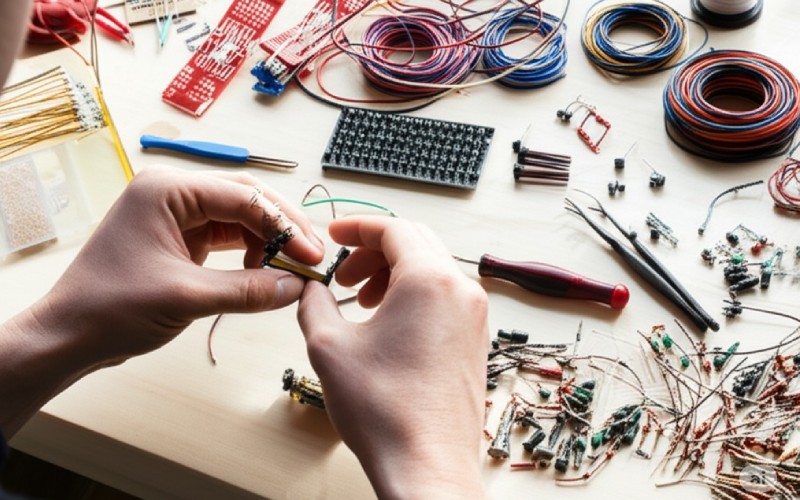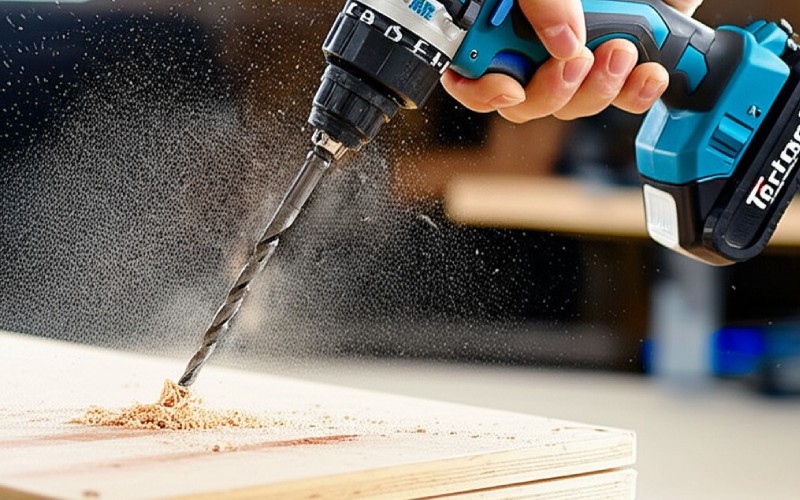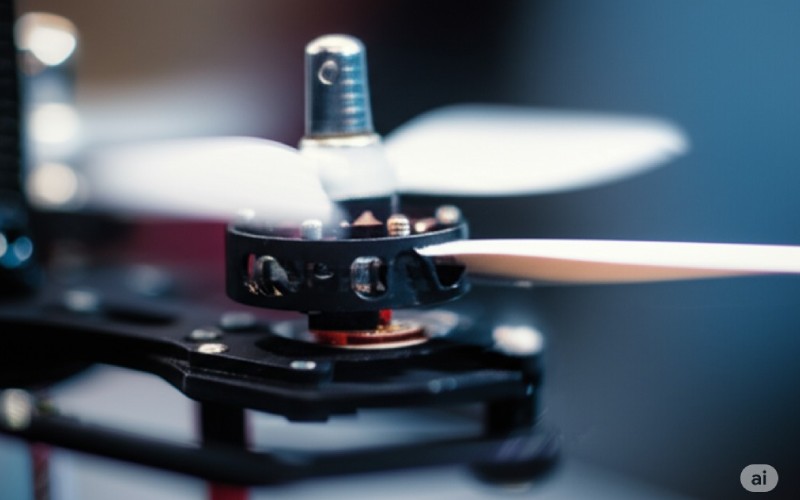Let Sino's Lamination Stacks Empower Your Project!
To speed up your project, you can label Lamination Stacks with details such as tolerance, material, surface finish, whether or not oxidized insulation is required, quantity, and more.

If you’re attempting to comprehend the distinction between brushed and brushless electric motors, you remain in good firm. This write-up is for you! Understanding the brushless vs brushed information will help you choose the ideal motor. It can save you a great deal of problems down the road. We’ll consider just how a brush motor works, and after that see exactly how a brushless motor does its task. This will aid you choose which kind of motor is ideal wherefore you wish to do.
Let me inform you, recognizing the basic DC motor is vital. Think about a DC motor as an electric motor that runs on DC power. This is a direct current, like from a battery. You need a DC power supply, like a battery or a converter, for these electric motors. Both the brush motor and the brushless motor we’ll speak about are sorts of DC motors. These DC electric motors are common in lots of gadgets. They take electrical energy and transform it right into activity. This motion can power numerous things, from toy vehicles to huge devices. The method they create this movement is where the brush is available in, or doesn’t! Contrasted to AC electric motors, DC motors are commonly less complex for battery power; AC motors work on alternating current.
The main point is an electromagnetic field doing a job. These DC motors make use of direct current. These motors make use of electricity to produce forces that make the motor spin. Whether it’s a brush motor or a brushless motor, the objective coincides: turning. The brush or absence of a brush is a large component of just how they accomplish it. These electric motors also play a huge duty in eco-friendly energy technology.
Now, let’s discuss the classic brushed DC motor. The name provides it away: this brush motor uses a brush or, more frequently, a pair of brushes. These brushes are tiny blocks, usually made from carbon. They are a key component of the motor. Their work is to send power to the spinning component of the motor. This brush contact is how the magic takes place in this sort of motor. When DC voltage is used across the brushes, the motor begins to turn.
These brushed motors make use of a system with brushes and a commutator. The commutator is a collection of steel contacts on the motor’s shaft. As the motor turns, the brush slides over these contacts. This action, called commutation, changes the magnetic field in the motor windings. The brushes assist commutate the motor. This switching keeps the motor spinning. So, the brush is essential for a brushed motor to function. Without a good brush connection, the brushed motor won’t run well, or at all. The brush itself wears down in time due to this rubbing. This brush needs to make good contact.
Brushed motors are normally less complex in construction. A brushed motor typically has a permanent magnet outside (the stator). The spinning part (the rotor) has coils of wire. Power goes to these coils through the brush system. That means the brush is constantly in contact. Switching the wires can alter the direction of the motor.
This brush motor layout is old yet reliable. It’s typically less expensive to make than a brushless motor. You can commonly control the motor’s speed just by changing the DC voltage; more voltage generally means more speed. Altering voltage directly affects motor speed in these brush motor types. However, the brush system in a brush motor can create issues. The brush breaks. Brushed motors lose some performance due to brush friction. Brush arcing creates sparks and electrical noise. And indeed, brushed motors can be loud due to the brush contact. Sometimes, capacitors or RC snubbers are added to minimize this brush noise. In many brushed motors, you can even see the sparks from the brush if you look very closely.
Alright, allow switch gears to the brushless motor. The name states everything: no brush! These BLDC motors, or brushless DC electric motors, are clever. A brushless DC motor is a newer sort of electric motor contrasted to the brush motor. It was made to do away with the issues caused by the brush in older electric motors. So, no brush wear, no brush dust, and no sparks from a brush! These motors eliminate the brush and commutator.
The important thing regarding a brushless motor is that it uses an electronic controller. This controller resembles a little computer for the motor. As opposed to a mechanical brush and commutator, the brushless motor counts on electronics to switch the power to the coils. Brushless motors replace the physical brush with electronics. This makes the brushless motor a lot more complicated in some ways. But it also opens a lot of awesome opportunities. The brushless electric motors depend on this digital brain to work. No brush implies a different means to make the motor spin.
You could be asking, ‘If there’s no brush, just how does a brushless motor work?’ It’s a great inquiry! In many brushless motor styles, the permanent magnet is on the rotor (the spinning component). The coils are on the stator (the fixed part). This is often the reverse of a brush motor. The electronic controller sends power to the stator coils in a certain sequence. This creates a rotating magnetic field. Brushless electric motors make use of electronic switching rather than a mechanical brush.
This rotating magnetic field draws the permanent magnet rotor in addition to it. That’s what makes the motor turn. The controller recognizes the rotor’s placement, often making use of sensors. Brushless motors typically use sensors to recognize the rotor position. It then energizes the right coils at the correct time to maintain the motor rotating efficiently. So, the brushless motor uses wise electronics instead of a physical brush to switch over the current. This is why since brushless electric motors have no brush, they stay clear of brush-related wear and tear. The brushless motor functions very efficiently because there’s no brush friction.
So, let’s place them side-by-side: the brushless vs the brushed type. The biggest difference between brushed and brushless electric motors is, of course, the brush. A brush motor has a brush, and a brushless motor does not. This solitary difference leads to several others. Brushed motors have brushes that wear down. This suggests they need more upkeep. You might be required to change the brush from time to time. A brushless motor, without any brush, typically lasts longer and requires much less care.
Another bottom line in the difference is effectiveness. Contrasted to brushed motors, brushless motors are usually a lot more effective. This is because there’s no brush friction to lose energy. Brushless motors have a tendency to be quieter as well. Brushless motors normally run cooler. Brushless motors additionally often tend to have much better torque-to-weight ratio. However, brushless motors call for special electronics, which adds intricacy and expense. A brush motor is simpler and commonly less costly upfront. The brush system in a brush motor also creates electrical noise, which brushless motors mainly stay clear of due to the fact that they do not have a brush.
From my experience, there are numerous reasons why a brushless motor could be your leading choice. If you need a motor that runs for a very long time without troubles, the brushless motor is fantastic. Because there’s no brush to wear out, the lifetime of the motor is usually much longer than a brush motor. This absence of brush wear also means much less upkeep. Brush wear is a common reason for motor failure in brushed types. A brushless motor can run for a very long time.
Brushless motors provide better speed control and greater efficiency. These brushless electric motors are great for demanding tasks. This suggests they can make far better use of battery power in mobile devices. For applications requiring electric motors that run continually, brushless is key. They additionally run quieter than a brush motor since there’s no brush sound. Brushless motors offer excellent torque over a wide speed range. Unlike brushed motors, which can lose efficiency as the brush wears, brushless motors keep their efficiency. Though brushless motors can be pricier, their lifespan commonly makes up for it. So, if you require high efficiency and lengthy life, and do not mind the greater preliminary cost of the motor, a brushless motor is usually the means to go, particularly to stay clear of brush related headaches.

Absolutely! Despite all the benefits of brushless motors, the dependable brush motor still has its place. Brushed motors are often better for these circumstances due to the fact that they are typically more affordable to get. The brushed motor technology is older and easier, so manufacturing prices are lower. This brush motor is a workhorse. Brushed motors provide a straightforward method to get activity.
If you require a motor for a standard job and don’t require very high efficiency or long life, a brush motor can be best. Brushed motors can additionally be easier to find in some very small sizes. They are also easier to manage the motor with simple DC voltage modifications; you do not constantly need complicated control electronics like with a brushless motor. For hobby tasks, toys, or applications where the motor won’t run frequently, a brush motor with its brush system is frequently sufficient. Numerous applications make use of permanent magnet DC brushed motors because of this. There are also brushed choices that are very little. Keep in mind, the brush in a brush motor does use, but for some usages, that’s all right.
So, exactly how do you pick between a brushed or brushless motor? Picking the appropriate motor type is vital. It actually comes down to your specific motor for your application. Think about these points: How long does the motor require to run? Just how much torque do you need? Is performance crucial? What’s your budget plan? Addressing these helps you locate the best motor. If you need an economical, straightforward motor for light use, a brushed motor could be great. Its components will eventually wear out, but it could last enough time. So, picking between a brushed motor and a brushless one depends on these factors.
However, if you require high performance, lengthy life, and low upkeep, a brushless motor is normally the better choice, also if brushless motors cost a bit more upfront. Because brushless motors do not have that friction from brushes, they stay clear of lots of issues. For things like drones, high-end power devices, or medical tools, brushless electric motors excel. You need to weigh the advantages and disadvantages of the brushed motor versus the brushless motor. Take into consideration the maintenance if you choose a brushed one. This is a vital part of the brushed or brushless choice.

The brushless technology keeps improving. Controllers are getting smarter and less expensive. This is making brushless motors much more common in everyday things. I see a growing number of devices and appliances switching over from a brushed motor to a brushless motor due to the benefits. The absence of wearing components is a huge marketing point.
Does this indicate the brushed motor will disappear? I do not assume so, not entirely. There will constantly be a demand for basic, low-cost motors for certain tasks. However these other motors supply a lot a lot more in performance and lifespan. Brushless designs are likewise obtaining smaller and much more powerful. We could see much more amazing usages for brushless motors in the future, specifically as the cost of brushless motors continues to go down. Both these motor types will likely remain, but the pattern is towards brushless.